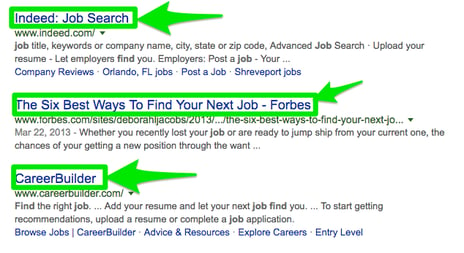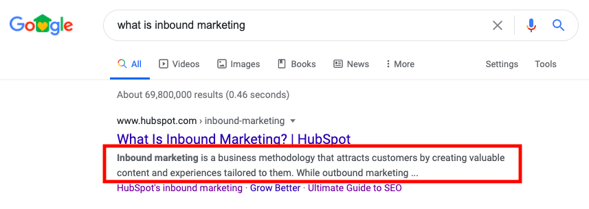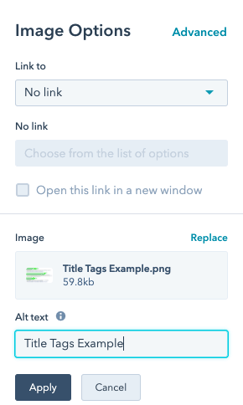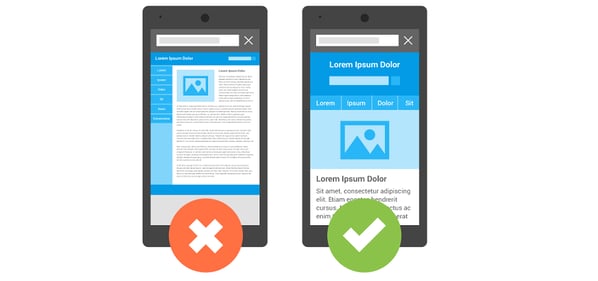As anyone who runs a website knows, it's pretty ruthless out there with the competition. Gone are the days of keyword stuffing and other blackhat trickery (the black magic of digital marketing). To rank in a search engine organic results page (SERP) these days, you need to outwork your rivals. And that means optimising your website for a whole bunch of different search engine optimisation (SEO) factors.
If you’re wondering, "what are the 3 primary components of on-page optimisation?” they are:
- Technical SEO
- On-page SEO
- Off-page SEO
Off-page SEO has gotten a lot of love in recent years. Things like backlinks, blog posts or guest posts and social media marketing are all still worth doing as part of an SEO strategy. It’s just that all that work won't pay off if you’re not on top of on-page SEO elements.
Google's SEO algorithm is like David Bowie: constantly changing and evolving. So if you want to know how to improve on-page SEO, you can’t rely on old tricks. You need to stay current and informed about the latest adjustments and best practices.
What is On-page SEO?
First things first, for anyone wondering, "what is on-page SEO?" don't worry, I've got your back.
On-page SEO is the parts of your website that you can use to boost your search engine ranking. Search engines need to crawl and understand your page so they can rank and index it.
On-page SEO elements are various things that a search engine looks at to do its job. Search engines are focused on the end-user. They’re really eager to please you and keep you coming back for more. And they do this in the only way they know: by getting you results.
But they’ve got lots of pages to rank. To optimise this process, they crawl web pages — like a fleet of terrifying digital spiders — and look at many different factors. Some of the on-page SEO elements it considers are:
- Headlines: like the one that started off this blog
- Content: the copy and images you're seeing as you scroll through this page
- Internal and external links: directing you to other content
- Site speed: how fast is this page loading for you?
- Mobile-friendliness: is it impossible to read with disproportionate text and buttons that are difficult to see, let alone click?
If you're wondering how to improve on-page SEO, you’ve got to get up to speed with these elements. Then, Google will be able to read and understand your site.
But don’t worry if this all seems a bit heavy. We've put together a list of the 10 essential on-page SEO elements that will drive that sweet, sweet organic traffic to your page.
1. E-A-T
Call it an involuntary response but I just grabbed a choccy after typing that header. Google's "E-A-T" first appeared in Google's 2014 Search Quality Guidelines. It’s only grown in importance since then. What’s interesting about E-A-T is that it’s done by humans, and not machines. Basically, they review webpages and report on their quality.
E-A-T stands for:
- Expertise
- Authoritativeness
- Trustworthiness
But what do these terms mean in the context of Google's search engine results?
Expertise
Expertise looks at the content of an individual page, not the whole website. Google isn't very clear on its criteria used to judge expertise, but it seems to favour expert authors and opinions meaning it can identify presumed quality content.
Authoritativeness
Authoritativeness judges a website on two things: the authority of the content and domain authority.
Links from other websites or social media mentions boost your ranking too. A high domain authority is given to more prominent, well-known organisations, like national broadcasters, government websites etc.
Trustworthiness
Trustworthiness focuses on the author, the content, and the website and evaluates the integrity of all three. The idea here is to keep misleading and dubious information from ranking highly.
Want the TL;DR? Google prioritises content that:
- Doesn't use misleading, clickbait headlines
- Doesn't contain misleading facts or errors
- Uses original, fresh reporting, analysis, and news
- Is well-written and produced
- Provides value compared to other similar pages.
With this in mind, it's worth questioning whether you have ideal content for your potential customers and if this creates an enjoyable experience for visitors while pleasing the digital spiderman that crawls your site.
2. Title Tag
Each page on your website has some HTML code that is known as a "title tag". When you type search terms into a search engine, it returns a bunch of results. The title tag is the blue part headline that you click on.
It's one of the first pieces of information that users and search engines get to see what the link is about.
Title tags should let the user know what they are about to click. If it's an article, it might contain the headline and the domain name.
Overall, title tags aren't huge on-page SEO elements. But if you get them wrong, they can hurt your rankings.
Here are some best SEO practices to optimise your title tags:
- Stick to 50-60 characters; otherwise, the title tag will be cut short when displayed by Google
- Don't use the same title tag on different pages; Google sees this as duplicate content
- Use the keyword or topic you're trying to rank for
A title tag should be a lean, accurate description of the page. Like they used to say on TV in the 1950s, “just give me the facts, ma’am.”
Also, if you want your content to be shared on social media — which you probably should — the title tag is how it will appear.
So get the links right if you want to increase click-through rates and drive traffic to your site to pump those conversion rates up.
3. Meta Description
Meta description sounds complex. But it isn't. It's the text that appears right below your title tag on a SERP.
You can have a meta description of any size, but Google usually cuts them to around 160 characters. That's slightly longer than the old Twitter character limit, so it's enough space to sell your readers on the article.
Google has said that meta descriptions aren't a huge ranking factor. But they’re really important to users. When a SERP spits back some results at you, a well-written, descriptive meta description stands out. Additionally, research suggests pages with meta descriptions get 6% more clicks than pages without.
So if you want to optimise your click-through rate (and let's be honest, who doesn't?), then make sure you have a punchy and appealing meta description that helps the user know about your article, product, or service.
4. Heading Tags
Heading tags are one of the more critical on-page SEO elements. Again, they're a piece of HTML code that lets users and search engines understand what's on a page.
Headline tags are broken up into H1, H2, H3, H4... tags. H1 is the headline, while H2 tags are subheadlines, with H3, H4, etc., used for other subsections. Heading tags are a great way to break up content and make it easily skimmable for the reader. Additionally, they help a search engine understand the structure of your page.
Tags are killer places to put keywords. Obviously, your H1 & H2 headings should contain your primary keywords, but if you have other words or phrases you'd like to target, throw them in the H3, H4, H5 tags, sit back, and profit.
5. URL
URLs are another one of the on-page SEO elements that deserve your attention. A URL — or a web address — helps users and search engines understand what a web page is about. Just like title tags, the aim here is to keep them tight and punchy - it's all about driving user intent. And most importantly, make sure they contain your primary keyword.
Like the other on-page SEO elements mentioned, clarity is key. Do yourself a favour and make things easy for the user and Google to understand. Here is an example of a good and a bad URL.
Good URL = www.examplecompany.com/books/historical-fiction
Bad URL = www.examplecompany.com/shop/products/244f.html
With the good URL, it's clear that the page will serve you books in the genre of Historical Fiction. With the bad URL, it's anybody's guess what it could be and it only encourages your bounce rate. I guess you’ll know it’s a product of some type, but that’s too enigmatic for most shoppers.
Again, this is all about giving users and search engines the information they need. Also, if you have a website that sells different products, these categories can help a search engine index each section. In our example above, if you sell books, records, and t-shirts, give them their own area with the URL.
6. Keywords
An effective content strategy goes beyond pretty pictures and great web design, it's also the (key)words you use to promote who and what you do. Keywords are the words, topics, or phrases that people type into a search engine to find what they are looking for. For example, if I wanted to find a hotel, I might type "hotel Melbourne". From here, the search engine will interpret that I'm trying to find a hotel in Melbourne and deliver me some relevant results. From there, I can take out a mortgage to fund a few nights stay...
Using keywords to rank won't be dramatic new information for anyone. But if you're trying to improve on-page SEO organically, you'll need to dive a bit deeper. Snorkels on, let's go in.
Keywords are essential on-page SEO elements. Choosing the right keywords to target requires a bit of research. For example, if you run an online bookstore, you'll want to rank for the term "books". But that is a difficult keyword to rank for because it's super competitive. As a result, you'll also want to try to rank for other more specific associated words and phrases.
Another thing to be aware of is "keyword cannibalisation". Yep, that’s right; your pages can start eating each other’s rankings. *Hold my beer* Let me explain.
While you might think that having several pages targeting the same keyword is a good idea - unfortunately, it's not. When Google indexes your website, pages targeting the same keyword end up competing with each other, causing all of them to rank lower.
Targeting the right keyword and topic research takes time and work. Consulting on-page SEO services like Neighbourhood can give you an edge.
7. Alt Tags
A cheeky bit of SEO knowledge for you: did you know you can use images for SEO optimisation? You've probably heard how important it is to have photos, video, and other media on your content. For users, it helps break up the content and provides a little variety and visual stimulation. But it also helps with SEO ranking.
Adding media is great, but there's one problem. Search engines can read text, but their ability to interpret images and video is limited. So you need to help them out. That's where alt tags come in.
Each piece of multimedia you use on your website should have an alt tag. And here’s why.
Accessibility
Alt tags mean that users with disabilities can understand your visual content. Visually impaired users use screen readers to access the content. It's nice to accommodate this demographic, and Google will reward you for making your site more accessible.
User Experience
Alt text helps your audience have a better user experience. People with low-bandwidth internet connections or bad smartphone reception often face a broken link icon where the image should be. If they have an alt tag, they’ll be able to see what the image was meant to show.
Image Traffic
Image traffic is one of the more underexploited on-page SEO elements. Alt tags can turn images into search results that appear in Google Images. This is a great way to drive more organic visitors to your website. Image search is growing all the time, and it's super for clothes and accessories and similar e-commerce stores.
8. Internal Linking
If you're looking for some quick and easy fixes on how to improve on-page SEO elements, look no further. Internal linking can provide some quick wins.
Internal linking refers to a hyperlink that goes to another page on your website. Internal links help search engine crawlers to find content that is related to each web page. By understanding pages in context with each other, the search engine can have a deeper understanding of the focus of your website.
You might notice a pattern with a lot of these tips: Make things easy for users and search engines!
Additionally, internal links are good for users. They can find more information and go into depth on subjects. If users stay on your site, this is a sign to Google that your content is worthwhile and trustworthy.
Footnote: beware of dead links. Dead links or broken links are a hyperlink on a web page that doesn't work because the destination website was removed or the page is behind a firewall. Dead links can encourage your website visitors to go elsewhere for information, increasing bounce rate.
9. Mobile-friendliness
Mobile phones account for more than 55% of online searches. Google knows this. As a result, pages that optimise for mobile are seen as more helpful to users. In fact, Google ranks websites based on their mobile rather than desktop.
Mobile phones have smaller screens and often rely on a phone network instead of high-speed broadband.
If you want a mobile-friendly page, there are a few factors to consider.
Page Speed: Many mobile users are using their devices on the go. They need pages to load quickly. If they don't get the info soon, your bounce rate might shoot up — and nobody wants that.
Responsive Design: Responsive design helps your website adapt to whichever device is requesting your webpage. Using a desktop version of a website on a smartphone isn't a good experience.
User Experience: There are lots of elements that go into mobile-friendly SEO design. Thumb friendly design that accommodates even the clumsiest of users, font sizes that are easy to read, and content that's effortless to navigate are essential to keep users on your site.
Local Search: People use local search when they're out and about trying to buy products, find bars and restaurants, or other services. If you run a bike repair shop, target keywords like "bike repair in [insert city]" to help your page show up when prospective customers are near you.
10. Page Speed
Page speed is one of the most important on-page SEO elements. It's a huge factor in Google rankings.
Page speed is also called "time to first byte". That name refers to how long it takes your browser to receive the first byte of information from the webserver. Around 1 in 4 visitors bounce from a page that takes more than 4 seconds to load. Additionally, statistics show that almost half of all users won't return to a poorly performing website.
No website can afford to ignore these statistics. Here are a few suggestions to add a bit of zip to your website.
Server Speed
Most websites don't own their servers. So this isn't an easy problem to fix yourself. However, you can cut this problem off at the pass by choosing a good server in the first place.
Using a well-ranked and reputable hosting service is a good start. Additionally, you can run a few tests to find out where the majority of your users are. Once you know where they are, you can choose a data centre location near them. Shorter distance = faster page speed.
Image Compression
Images are one of the most common things that cause slow page speed. People love visual content, and they’re great for SEO, but it can also seriously drop your page speed.
Remember, most people are accessing your site via smartphone. So make sure to use image compression where you can. So take advantage of all the image compression software out there, so even image-heavy pages can load fast.
Additionally, there are lots of plugins that help you defer images. That means they'll only load as the viewer scrolls through your page. i.e., only when they need them.
Cache
A good cache policy can increase page speed. Cache stores images and logos on your user's device the first time they use it. When they come back, the page will load faster.
Lean Themes and Plug-ins
When you set up your website, the temptation is to load it up with cool, complex themes and advanced plug-ins. But if your service is slow, this isn't a luxury you can afford.
Some of the best websites are streamlined and focused on delivering outstanding performance. Sliders, animations, and other functions are useless if customers keep bouncing from your site because of its sluggish performance.
These are the on-page SEO elements that affect search engine ranking. It's vital to get these fundamentals right if you want to have pages that people find through organic search. Of course, technical and off-page elements need some love too. Everything needs to work in harmony to give you a top-class performance. Taken individually, some of these on-page SEO elements won't always have a huge effect on your rankings. However, taken together, they can make a big difference.
If you put in the work with these SEO elements, you'll reap the benefits. Remember, Google rewards websites that deliver great, helpful, and relevant content to its users when they need it. So check off these items, and you can drive more organic traffic to your site.
But if you want to supercharge your growth and sales, professional on-page SEO services are the way to go. So get in touch today!


